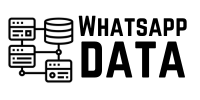Teachers have a unique ability to go above and beyond – from spending extra hours after school helping students understand tricky subjects to organizing extracurricular activities and offering encouraging words, teachers always rise to the occasion.
When COVID-19 and lockdown upended schools in the spring of 2020,
teachers once again showed their resilience and dedication by helping their students flourish in challenging times. Educators found themselves adapting to unfamiliar digital classrooms, guiding children who may have had limited resources at home, and developing lesson plans that needed to be engaging in entirely new ways.
While almost all school districts have returned to the relative normalcy of in-person teaching, the impacts of the coronavirus continue to resonate. How has learning technology changed over the past few years, how are teachers faring today, and where might the future of education go? Here are a few insights into the ways COVID-19 has impacted our schools.
The Evolution of Remote Education
The pandemic was a catalytic event in the adoption of remote learning, but it wasn’t a sudden leap to online school. For years, teachers and students have been using platforms like Blackboard and Canvas to upload assignments, post quizzes, and exchange messages. In addition, fully remote teaching had been building momentum in charter schools and online universities, but virtual learning hadn’t been accurate mobile phone number list implemented on a broad scale before lockdown.
Of course, that all changed in March 2020.
Initially, many schools struggled to with the public and increase find ways to effectively connect teachers with their students, figuring out solutions as they went along. Many students couldn’t reliably show up for online classes from home, and school districts had to adapt their vietnam data resources to minimize gaps in education.
Educators made truly herculean
efforts to ensure their students had the opportunity to access their virtual classrooms. During the pandemic, 45 percent of public schools were able to distribute laptops or other devices to all their students, while another 39 percent provided them to students who didn’t have access to technology at home.
Principals also worked to ensure that all students had access to the internet during remote learning, collaborating with internet providers to provide service (45 percent), sending home hotspots (61 percent), or offering safe spaces to connect to Wi-Fi (37 percent). While some of this funding was provided at state and federal levels, often districts worked directly with companies to arrange access to technology.
Meanwhile,
teachers were juggling the equally difficult feats of creating engaging virtual environments for their students while rapidly mastering new technology themselves. They balanced real-time video lessons with asynchronous assignments to be completed when schedules allowed. They made silly videos to boost their students’ spirits and learned the best apps to use for each subject.
When schools began to offer hybrid classes, educators had to adjust to a new mode of learning once again. With complicated schedules, socially distanced desks, and masked interactions, they had to simultaneously engage in-person students and their remote peers. Hybrid classrooms became mini-IT labs, equipped with microphones, cameras, and video screens to bridge the gap between the physical and virtual worlds.
Most schools
are back to in-person education these days, but the end of virtual learning isn’t in sight just yet. Between ongoing coronavirus cases and staffing shortages, many schools this year have been forced to temporarily pivot to remote schedules. In addition, there’s high demand for virtual schools from both parents and districts, so it seems that digital classrooms are here to stay.

